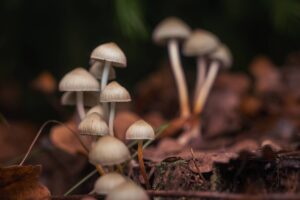What is CBD?
Cannabidiol or BCD is a non-psychotropic cannabinoid compound with enormous therapeutic potential.
Cannabinoids are chemicals that trigger the cannabinoid (and other) receptors in the brain and body. In addition to phyto-cannabinoids produced by the plant, there are endogenous cannabinoids that occur naturally in the body, as well as synthetic cannabinoids created by pharmaceutical researchers.
CBD has strong anti-oxidant, anti-inflammatory, anti-spasm, anti-convulsant, aunty-psychotic, anti-tumoral, and neuro-protective properties. CBD directly activates serotonin receptors, causing an antidepressant effect, as well.
Scientific and clinical studies have shown that CBD could be therapeutic for many conditions, including chronic pain, cancer, anxiety, diabetes, epilepsy, rheumatoid arthritis, PTSD, sleep disorders, alcoholism, cardiovascular disease, antibiotic-resistant infections, and neurological ailments.
Academic research centers in the United States and elsewhere are currently studying the effects of CBD on these and other health problems.
CBD Is A Medicinal Treasure Trove
More than 100 cannabinoids have been identified in the cannabis plant. Of these, CBD and THC have been studied most extensively.
CBD is a non-toxic, non-euphoric substance that doesn’t make people feel stoned. CBD works synergistically with TGC. Cannabidiol enhances THC’s painkilling impact, while modifying THC’s psychoactive. CBD can also neutralize unfavorable effects that THC may cause, such as anxiety and rapid heartbeat.
Not everyone enjoys the THC high. CBD-rich cannabis may be an appealing option for those seeking the medicinal benefits of cannabis without disconcerting dysphoria or other unwanted side effects.
CBD is the predominant cannabinoid in hemp grown for fiber or seed oil. But hemp contains much less CBD than CBD-rich cannabis. Traditionally, plants grown for hashish contained THC and CBD in equal measure. In recent times in the USA and elsewhere, genetics have changed to accommodate consumer demand for high THC content. Consequently, CBD almost disappeared from the grassroots gene pool.
After several decades in which only high-THC cannabis was available, CBD-rich strains and products are now accessible in states where medical marijuana is legal.
About CBD-Rich Oil Extracts
CBD-rich oil extracts and other CBD-infused products are poised to play a more prominent role in the burgeoning medical marijuana industry, as providers and product-makers increasingly cater to a broad constituency in an effort to attract new clientele.
In stats that have legalized medical marijuana, CBD-rich remedies are available in many forms: herb, edible, topicals, tinctures, extracts, and capsules. In some states, certified patients can access measured, dose-specific CBD-rich oil concentrates with varying ratios of cannabidiol and THC.
Scientific studies show that CBD and THC work best in combination and potentiate each other’s therapeutic effects. Teh amount of CBD present is not the only factor influencing the effects of a cannabis-based medicine. The ratio of CBD to THC may be as more important. Terpenoid and flavonoid content are also very important.
One cancer patient described CBD-rich cannabis as “replacing but not intoxicating.”


